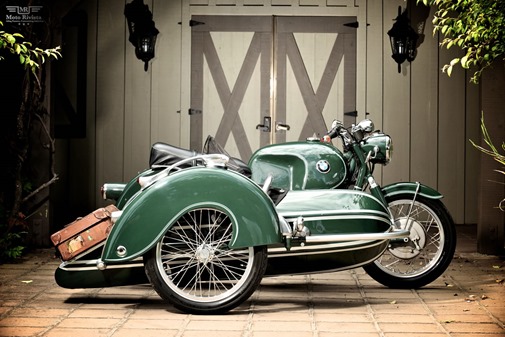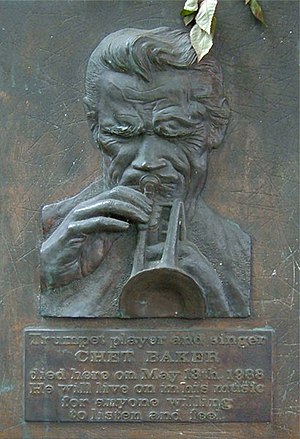![a1046603_elenor mcevoy_02 a1046603_elenor mcevoy_02]()
Eleanor McEvoy (born 22 January 1967) is one of Ireland‘s most accomplished contemporary singer/songwriters. McEvoy composed the song "Only A Woman’s Heart", title track of A Woman’s Heart, the best-selling Irish album in Irish history.
Biography
McEvoy’s life as a musician began at the age of four when she began playing piano. At the age of eight she took up violin. Upon finishing school she attended Trinity College, Dublin where she studied music by day and worked in pit orchestras and music clubs by night.
![a1046603_elenor mcevoy_01 a1046603_elenor mcevoy_01]() McEvoy graduated from Trinity with an Honors Degree in music, and spent four months busking in New York City. In 1988 she was accepted into the RTÉ National Symphony Orchestra where she spent four years before leaving to concentrate on song writing.
McEvoy graduated from Trinity with an Honors Degree in music, and spent four months busking in New York City. In 1988 she was accepted into the RTÉ National Symphony Orchestra where she spent four years before leaving to concentrate on song writing.
She built up a following in clubs in Dublin with her three piece band, Jim Tate on bass, Noel Eccles on drums, and latterly Bill Shanley on guitar.
During a solo date in July 1992, she performed a little-known, self-penned song, "Only a Woman’s Heart". Mary Black, of whose band McEvoy was a member, was in the audience and invited her to add the track to an album of Irish female artists. The album was subsequently titled A Woman’s Heart and the track was released as the lead single.
A few days before A Woman’s Heart was released, Tom Zutaut A & R from Geffen Records, who had previously signed Guns & Roses, Motley Crue, and Edie Brickell, offered McEvoy a worldwide recording deal after watching her perform at The Baggot Inn in Dublin.
The album went on to sell over three-quarters of a million copies in Ireland alone and was (and remains) the biggest selling Irish album of all time.
Eleanor McEvoy, the self-titled debut offering, recorded in Windmill Lane Studios, was released in February 1993, and tours in the United States, Asia, and Europefollowed. Back on Irish soil, McEvoy was awarded Best New Artist, Best New Performer, and Best Songwriter Awards by the Irish entertainment and music industries. In 2011 Portuguese singer Luis Represas included a lovely version of Go Now from McEvoy’s eponymous album on his recording Reserva Especial.
As she began writing her second album, Tom Zutaut departed Geffen Records, so when Columbia U.S. offered her a new deal, she jumped ship and began working on a new, edgier second album, which would eventually be titled What’s Following Me? The album was released in 1996 and the sound was louder and grungier that her debut. The single "Precious Little" built to a Top-10 radio hit in the United States, giving McEvoy the exposure she needed for a headline tour of the U.S. She was invited to contribute of a number of movie and TV soundtracks.
At home, the success of A Woman’s Heart continued to overshadow McEvoy’s solo work and fans of the mammoth hit were disappointed with the rock elements of the second album and those that might have identified with her bittersweet lyrics, sensual vocals, and loud guitars turned a blind eye to the album.
McEvoy released her third album Snapshots in 1999. Her primary goal was to make Snapshots her most song-oriented album to date. Toward that goal, McEvoy hooked up with legendary producer Rupert Hine (who worked with Stevie Nicks, Tina Turner, Suzanne Vega, and Duncan Sheik) and recorded the album at Rupert’s “Chateau de la Tour de Moulin” and then in Metropolis Studios in London. The extensive use of drum loops was a complete change in style from her previous work.
The album was greeted by rave reviews on both sides of the Atlantic. ”… her sophisticated voice and compassionate seasoned lyrics … make Eleanor McEvoy’s album a gem….” declared The Boston Globe, while The Sunday Times described it as “her strongest album to date, with well appointed social comment topics…McEvoy’s take on matters emotional also hits pay dirt with the likes of the excellent ‘Did You Tell Him?’" However Columbia Records had been unprepared for the complete stylistic change and relations between the company and McEvoy became strained. Despite this, a sell-out, 24-date tour of the United States accompanied the release of Snapshots in the summer of 1999, followed by the "Snapshots Unplugged" tour March–April 2000, which culminated in a performance in Boulder, Colorado accompanied by the E Town Band where she duetted with Richard Thompson.
By 2000 McEvoy found herself increasingly entwined in record company red tape, Columbia had bought her first album Eleanor McEvoy from Geffen Records, but were refusing to release it. Neither What’s Following Me? nor Snapshots had set the sales charts on fire, and McEvoy’s public perception, particularly in Ireland, was caught in a limbo state between rock and folk, with "A Woman’s Heart" and its many incarnations still lurking in the back of the minds of the record-buying public.
Increasingly McEvoy started to work on outside projects. The Bert Jansch tribute album People On The Highway – A Bert Jansch Encomium (Market Square Records catalog number MSMCD106, Koch, September 2000) saw a newly recorded version of Jansch’s song about Sandy Denny, "Where Did My Life Go?", recorded by McEvoy especially for the album. Participating artists included Al Stewart, Roy Harper, Bernard Butler, Donovan, and Ralph McTell.
As the century closed, McEvoy had had enough of major-label involvement, making the decision to take the fourth album and head down the independent road. Yolawas a turning point in McEvoy’s musical direction. Released in 2001, it reflected the acoustic, jazz-influenced style she had developed on stage with Brian Connor. For McEvoy it was a new departure and one that found favour with music media. Irish Music Press described it as …. "her finest album", "a brave rejection of the predictable", "musically daring….beautifully atmospheric". International press lauded it as "a back to basics triumph", "beautifully restrained", "a classic", and "McEvoy’s best release to date". Extensive touring throughout the U.S. and the UK followed. In 2002 Yola was named "Record of the Year" by Hi-Fi+ Magazine.
This Week’s Favourite Female singer – Part 2 – Sharon Shannon
![a1046604_Sharon Shannon_03 a1046604_Sharon Shannon_03]() Sharon Shannon (born 12 November 1968 in Ruan, County Clare) is an Irish musician. She is best known for her work with the accordion and for her fiddle technique. She also plays the tin whistle and melodeon. Her 1991 album Sharon Shannon is the best selling album of traditional Irish music ever released there. Beginning with Irish folk music, her work demonstrates a wide-ranging number of musical influences, including reggae, cajun music, Portuguese music, andFrench Canadian music. Her single What You Make It (da, da, da, da) featured hip hop music artists. She won the lifetime achievement award at the 2009 Meteor Awards.
Sharon Shannon (born 12 November 1968 in Ruan, County Clare) is an Irish musician. She is best known for her work with the accordion and for her fiddle technique. She also plays the tin whistle and melodeon. Her 1991 album Sharon Shannon is the best selling album of traditional Irish music ever released there. Beginning with Irish folk music, her work demonstrates a wide-ranging number of musical influences, including reggae, cajun music, Portuguese music, andFrench Canadian music. Her single What You Make It (da, da, da, da) featured hip hop music artists. She won the lifetime achievement award at the 2009 Meteor Awards.
![a1046604_Sharon Shannon_02 a1046604_Sharon Shannon_02]()
Recording career – The Waterboys
Shannon began her own recording career in 1989, working with producer John Dunford and musicians such as Adam Clayton, Mike Scott and Steve Wickham. The work with Scott and Wickham led to Shannon’s joining their band, The Waterboys. Shannon was with the band for eighteen months, and contributed both accordion and fiddle to their Room to Roam album. Her first world tour was with The Waterboys. Like Wickham, she left the group when Scott and group member Anthony Thistlethwaite wanted to move the band back to a more rock and roll sound.
First solo recordings
Her 1991 album Sharon Shannon is the best selling album of traditional Irish music ever released there.
Shannon’s solo work has achieved remarkable airplay and commercial success, especially in Ireland. After her inclusion on A Woman’s Heart, a compilation album and a tribute to her work on The Late Late Show, Shannon’s music received a great deal of exposure, contributing to the record-breaking sales of her debut album.
Sharon’s second album, Out The Gap (1994), was produced by Dennis "Blackbeard" Bovell and had a distinctly reggaefeel.
Sharon’s track, "Cavan Potholes", written by Dónal Lunny is featured on the 1996 compilation Common Ground: Voices of Modern Irish Music. Other stars on the album include Sinéad O’Connor, Elvis Costello, Kate Bush and Bono.
Sharon’s fourth album titled "Spellbound" was released in September 1998. This compilation featured new material, live tracks and also tracks from previous albums.
Also in 1998 Sharon was asked by violinist Nigel Kennedy to join a him in performing on his "Jimi Hendrix Suite", later performing this work in some major European cities.
Her 2000 album, The Diamond Mountain Sessions, which included vocals from a wide variety of artists, was also a commercial success, being certified triple platinum.
Shannon recorded with Steve Earle on the song "The Galway Girl", which was released on both Earle’s album Transcendental Blues, and Shannon & Friends’ The Diamond Mountain Sessions. Both albums were released in 2000.
Another collaboration with Earle was the instrumental "Dominic Street", released on Earle’s 2002 album Sidetracks. Shannon has also worked with Jackson Browne, the band Coolfin, Dónal Lunny, Moya Brennan, Kirsty MacColl, Christy Moore, Sinéad O’Connor, Liam O’Maonlai, and John Prine, amongst others.
Later work
In 2004 Sharon Shannon released the album Libertango with guest spots from Róisín Elsafty, Sinéad O’Connor and the late Kirsty MacColl.
In 2005, she appeared on Tunes, a collaboration with Frankie Gavin, Michael McGoldrick, and Jim Murray.
In 2006 a celebration of 15 years of recording came out with The Sharon Shannon Collection 1990–2005.
In 2007 Shannon has worked with Belinda Carlisle for her album Voila.
As a solo musician, Sharon Shannon has toured Australia, Europe, Hong Kong, and Japan. She has also performed for politicians such as Bill Clinton, Mary Robinsonand Lech Wałęsa. Shannon has played benefit concerts for causes that she supports, such as animal welfare.
She continues to record her music and perform with her tour band, The Woodchoppers. A live version of Galway Girl recorded with Mundy was the most downloaded track in Ireland in 2007, winning a Meteor Award.
In 2008, Shannon featured in the Transatlantic Sessions.
In 2009, she played "Galway Girl" live at the Meteor Music Awards 2009, where she also picked up a Lifetime Achievement Award and won Most Downloaded Track again for Galway Girl with Mundy.
Shannon features playing accordion on The Lee Thompson Ska Orchestra single "Bangarang", which also features Dawn Penn as vocalist. It was released on 26 May 2014.
Text from Wikipedia
I know Sharon Shannon is not a singer and worse, she plays the accordion, an instrument I’ve been crapping on on enough occasions here on this blog but the truth is, if I should be a bit down in the dumps few musicians in the world can lift my spirit more than Sharon Shannon. It is bloody well impossible not to get in a good mood listening to her music – Ted
Filed under:
Music Tagged:
Celtic music,
Eleanor McEvoy,
Irish music,
Sharon Shannon ![]()
![]()
































 Nevasa
Nevasa



















